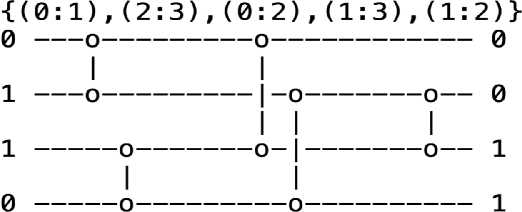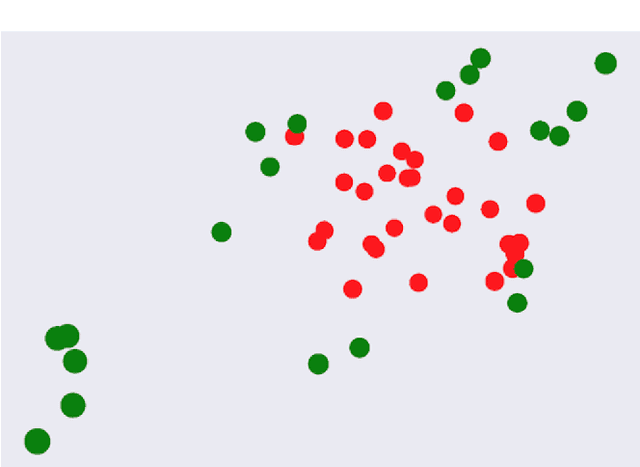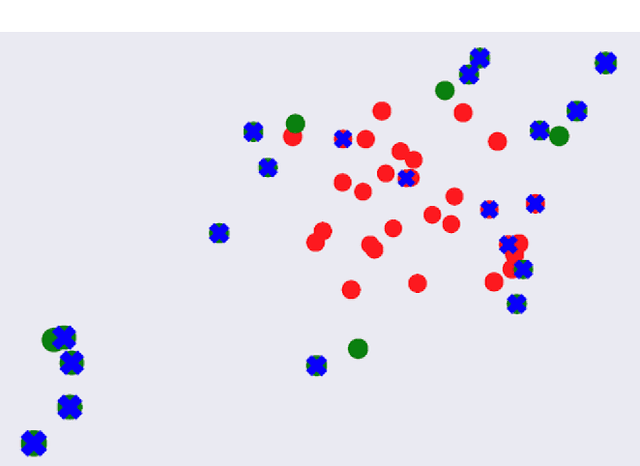Simon Lau
AgentRec: Next-Generation LLM-Powered Multi-Agent Collaborative Recommendation with Adaptive Intelligence
Oct 02, 2025Abstract:Interactive conversational recommender systems have gained significant attention for their ability to capture user preferences through natural language interactions. However, existing approaches face substantial challenges in handling dynamic user preferences, maintaining conversation coherence, and balancing multiple ranking objectives simultaneously. This paper introduces AgentRec, a next-generation LLM-powered multi-agent collaborative recommendation framework that addresses these limitations through hierarchical agent networks with adaptive intelligence. Our approach employs specialized LLM-powered agents for conversation understanding, preference modeling, context awareness, and dynamic ranking, coordinated through an adaptive weighting mechanism that learns from interaction patterns. We propose a three-tier learning strategy combining rapid response for simple queries, intelligent reasoning for complex preferences, and deep collaboration for challenging scenarios. Extensive experiments on three real-world datasets demonstrate that AgentRec achieves consistent improvements over state-of-the-art baselines, with 2.8\% enhancement in conversation success rate, 1.9\% improvement in recommendation accuracy (NDCG@10), and 3.2\% better conversation efficiency while maintaining comparable computational costs through intelligent agent coordination.
LLM4Rec: Large Language Models for Multimodal Generative Recommendation with Causal Debiasing
Oct 02, 2025Abstract:Contemporary generative recommendation systems face significant challenges in handling multimodal data, eliminating algorithmic biases, and providing transparent decision-making processes. This paper introduces an enhanced generative recommendation framework that addresses these limitations through five key innovations: multimodal fusion architecture, retrieval-augmented generation mechanisms, causal inference-based debiasing, explainable recommendation generation, and real-time adaptive learning capabilities. Our framework leverages advanced large language models as the backbone while incorporating specialized modules for cross-modal understanding, contextual knowledge integration, bias mitigation, explanation synthesis, and continuous model adaptation. Extensive experiments on three benchmark datasets (MovieLens-25M, Amazon-Electronics, Yelp-2023) demonstrate consistent improvements in recommendation accuracy, fairness, and diversity compared to existing approaches. The proposed framework achieves up to 2.3% improvement in NDCG@10 and 1.4% enhancement in diversity metrics while maintaining computational efficiency through optimized inference strategies.
Bridging Collaborative Filtering and Large Language Models with Dynamic Alignment, Multimodal Fusion and Evidence-grounded Explanations
Oct 02, 2025Abstract:Recent research has explored using Large Language Models for recommendation tasks by transforming user interaction histories and item metadata into text prompts, then having the LLM produce rankings or recommendations. A promising approach involves connecting collaborative filtering knowledge to LLM representations through compact adapter networks, which avoids expensive fine-tuning while preserving the strengths of both components. Yet several challenges persist in practice: collaborative filtering models often use static snapshots that miss rapidly changing user preferences; many real-world items contain rich visual and audio content beyond textual descriptions; and current systems struggle to provide trustworthy explanations backed by concrete evidence. Our work introduces \model{}, a framework that tackles these limitations through three key innovations. We develop an online adaptation mechanism that continuously incorporates new user interactions through lightweight modules, avoiding the need to retrain large models. We create a unified representation that seamlessly combines collaborative signals with visual and audio features, handling cases where some modalities may be unavailable. Finally, we design an explanation system that grounds recommendations in specific collaborative patterns and item attributes, producing natural language rationales users can verify. Our approach maintains the efficiency of frozen base models while adding minimal computational overhead, making it practical for real-world deployment.
Enhanced Optimization with Composite Objectives and Novelty Pulsation
Jun 07, 2019



Abstract:An important benefit of multi-objective search is that it maintains a diverse population of candidates, which helps in deceptive problems in particular. Not all diversity is useful, however: candidates that optimize only one objective while ignoring others are rarely helpful. A recent solution is to replace the original objectives by their linear combinations, thus focusing the search on the most useful trade-offs between objectives. To compensate for the loss of diversity, this transformation is accompanied by a selection mechanism that favors novelty. This paper improves this approach further by introducing novelty pulsation, i.e. a systematic method to alternate between novelty selection and local optimization. In the highly deceptive problem of discovering minimal sorting networks, it finds state-of-the-art solutions significantly faster than before. In fact, our method so far has established a new world record for the 20-lines sorting network with 91 comparators. In the real-world problem of stock trading, it discovers solutions that generalize significantly better on unseen data. Composite Novelty Pulsation is therefore a promising approach to solving deceptive real-world problems through multi-objective optimization.
 Add to Chrome
Add to Chrome Add to Firefox
Add to Firefox Add to Edge
Add to Edge